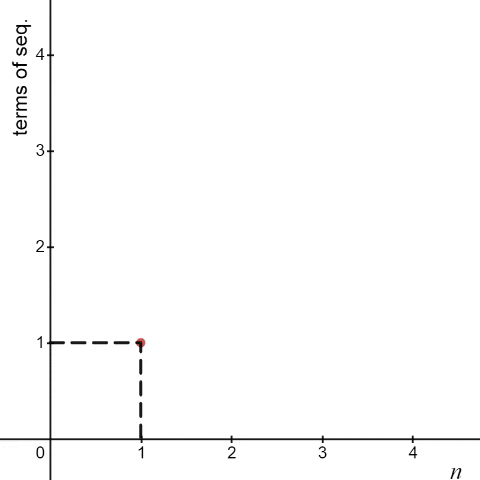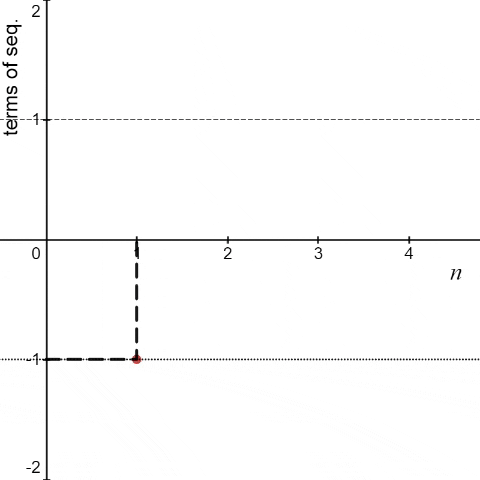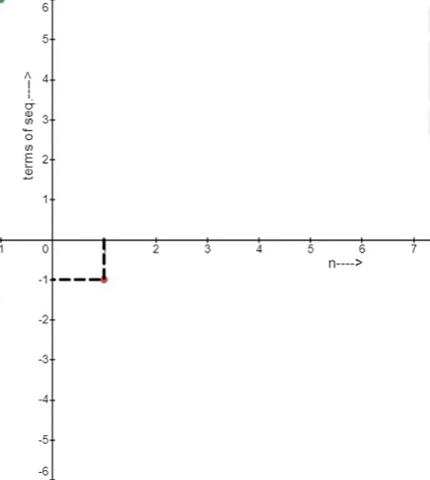Introduction to Real sequences; convergent, divergent and oscillating real sequences
First, let's try to understand what sequences really are. So formally, "A sequence in a non-empty set A is a function from ℕ into A."
In particular, a real sequence 'a' is a function from ℕ into ℝ.
Imagine a red dot flashing, first at a1, then a2 and a3 and so on.
2 / 1 = 2
3 / 2 = 1.5
5/ 3 = 1.667
8 / 5 = 1.6
13 / 8 = 1.625
21 / 13 = 1.615
34 / 21 = 1.619
55 / 34 = 1.618
We can see that each subsequent number in this sequence is approaching or getting closer and closer to the "Golden Ratio". This concept of sequences approaching a finite real number will be discussed later.
This is a sequence of polygons, and the areas of the polygons form a sequence of real numbers. Later, Archimedes used this method to find an approximation to π. The only difference was that he used a hexagon instead of a square.
It's interesting to see that we can comprehend sequences in this manner. As you must have observed in the above examples, that sequences were converging to a finite real number. This phenomenon of sequences is called "convergence".
Now, let’s try to see how students from different majors would describe this phenomenon!
For someone majoring in English, they would probably say that the terms of the sequence come very close to l eventually.
For someone interested in Economics, they would say an can be brought arbitrarily close to l provided that n is sufficiently large.
For a physics major, they would say an can be brought infinitesimally close to l provided n is infinitely large.
If we try to define the divergence of a sequence we will need the concept of infinity, i.e., sequences diverging to ∞ would mean an→∞ as n →∞.
By the above definition of convergence, we know that an can be arbitrarily close to l provided n is sufficiently large.
Thus we can say, replacing the measurement of closeness to l i.e. replacing (l-ε ,l+ε ) by (k,∞). Hence the interval I will be (k,∞).
We can say that an→∞ as n →∞ iff for every k>0, there exists n0 ∈ ℕ such that n ≥ n0 ⟹ an ∈ (k,∞) or an > k.
Another example that doesn’t fit the definition of convergence is <an> = (-1)n ∀ n.
We can see that the above sequence is neither convergent nor divergent. By the above animation, we can see that the sequence (-1)n is oscillating between -1 and 1. So, such sequences are called "oscillating" sequences.
Another example of an oscillating sequence can be <an> = n(-1)n ∀ n.
If you notice, this oscillating sequence is not bounded. Such unbounded sequences are said to oscillate infinitely while oscillating sequences like <an> = (-1)n which are bounded are said to oscillate finitely.
We hope that this helped you to get a better understanding of real sequences :)






Comments
Post a Comment